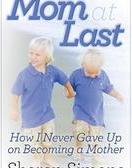Infertility Isn’t The End: Five Options for You to Consider
Couples who are planning to have children are usually shocked and depressed if no pregnancy ensues but, unfortunately, the diagnosis of infertility is increasingly common in the United States. The good news is medical science has developed a number of approaches to help infertile couples.
Depending on the cause, different treatments may be needed, but here are five options for you to consider:

Hormonal Treatments
Fertility drugs can be taken either orally or by injection to increase the number of eggs produced and released by a woman at ovulation. It is one of the least invasive treatments and involves less money than some of the other options, but still needs to be carefully supervised by a skilled specialist since it can produce multiple pregnancies.
Artificial insemination with partner sperm or donor sperm
This process involves depositing the sperm inside the uterus in order to bypass unfavorable cervical conditions and to allow the sperm to reach the egg more easily, according to an expert from California Cryobank. If donor sperm is needed, there are many sperm banks throughout the United States to choose from. Many banks provide carefully chosen sperm and continue to offer support to families even after the birth by providing cord blood storage services. Some banks even offer the option of registering for a sibling registry for the child to get information from and connect with extended family later.
In vitro fertilization
This process places more physical demands on the woman, requiring several series of hormone injections to produce a large number of eggs. The eggs will then be surgically extracted from her ovaries and mixed with the sperm in a lab dish. Some of the resulting embryos will be transferred to the woman’s uterus, with extras being stored by the lab as frozen embryos for future pregnancies.
Intracytoplasmic Sperm Injection
This process is especially effective for infertility problems due to situations in which there are few, or poor quality, sperm. It is a variation of IVF (as above) in which one healthy appearing sperm is injected directly into each extracted egg, thereby ensuring fertilization.
Using donated frozen embryos
This process involves transferring embryos, which have been donated by another couple, into the uterus. Although this approach eliminates the chance of any genetic continuity, it does allow for the full experience of pregnancy and childbirth while reducing the costs and physical risks of ovarian stimulation and egg extraction.
Written By Kandace H; Guest Blogger for Mom at Last

